We typically think of bamboo as the woody grass (in the family Poaceae) with hollow stems. This is one of the notable characteristics of bamboo that makes it relatively easy to recognize.
But there are a few varieties of solid bamboo whose stems, surprisingly, are not hollow. Technically speaking, they have little or no inter-nodal cavity. These bamboo species are not common in North America, but they are very popular for building furniture in Asia and South America. They include several species of Chusquea and Dendrocalamus, as well as a handful of other unusual varieties.
NOTE: This article first appeared in July 2020, most recently updated in March 2024.
| Botanical name | Common name | Description |
| Chusquea quila | The Quila | South American clumping bamboo |
| Dendrocalamus stocksii | Marihal bamboo | Mid-sized clumping bamboo from India |
| Dendrocalamus strictus | Male bamboo, Solid bamboo, Calcutta bamboo, Iron bamboo | Clumping timber bamboo from Asia |
| Indocalamus latifolius | Solidus | Modest-sized runner with thick foliage |
| Oxytenanthera abyssinica | African Lowland Bamboo | Drought-tolerant, clumping bamboo |
| Phyllostachys heteroclada | Solid stem bamboo, Water bamboo | Cold hardy, running bamboo |
| Phyllostachys viridiglaucescens | Green glaucous bamboo | Cold hardy, running bamboo |
| Pseudoxytenanthera ritchiei | Erankol, Huda, Chiwa, and others | Drought-tolerant, clumping bamboo |
| Tam Vong | Medium-sized bamboo from Vietnam |

The importance of solid bamboo
The varieties of solid bamboo have great economic and cultural importance in the areas where they grow, particularly India and southern Asia. These plants have all the other properties of bamboo, growing very quickly, producing strong wood, and being resistant to pests and disease. Not only that, but because the stems are solid, these varieties of bamboo have even greater structural integrity for building purposes.
Species of solid bamboo
Genus Chusquea
The genus Chusquea is endemic to Latin America, and most varieties have stems that are solid or nearly solid. C. quila in particular, grows mostly in the Valdivian temperate forest of Chile and Argentina, up to altitudes of around 2000 feet. This is a clumping and climbing variety with winding, almost vine-like culms, which grow more than 50 feet high.
Craftspeople and furniture makers are especially fond of C. quila as a robust and readily renewable building material. It is also prized for fire-making due to its ability to burn easily, even when fresh.
In places that have suffered from deforestation, this prolific bamboo has sometimes reclaimed and dominated barren areas, leaving no space for other native vegetation to gain a foothold.
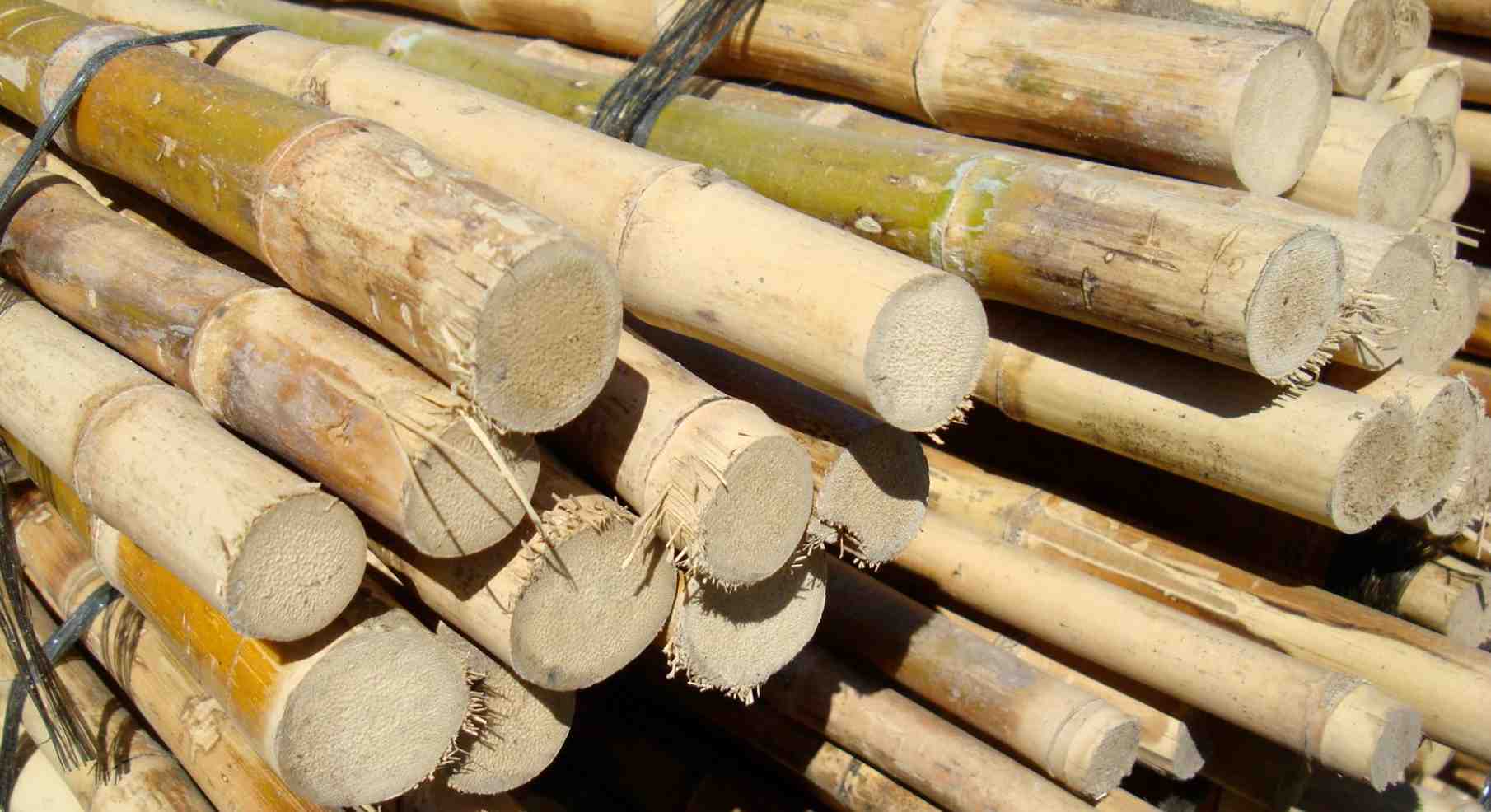
For ornamental purposes, C. gigantea and C. culeou are both very popular. They are also native to Chile. Like all Chusqueas, they have solid culms and are non-invasive with clumping rhizomes. They are also cold-hardy to nearly 0º F.
Dendrocalamus stocksii
A mid-sized, non-thorny, loose-clumping bamboo native to southern India, D. stocksii plays an important part in the local furniture-making industry. Like other species of Dendrocalamus, it is sometimes referred to as an “iron bamboo” for its tremendous strength.
The species is indigenous to the humid tropics and is not widely known outside of Central Western Ghats, in the Kerala state of India. Culms grow up to 2 or 3 inches in diameter and to about 30 feet in height.
Dendrocalamus strictus
Another variety of “iron bamboo“, D. strictus has culms that are often (but not always) solid. Canes of this timber variety get 3 to 5 inches in diameter, reaching 50 to 60 feet tall. It grows in other parts of India, to the north and east, as well as Nepal, Bangladesh, Myanmar, and Thailand.
Sometimes called Male bamboo, Solid bamboo or Calcutta bamboo, this species is also important in building and light construction. It is used locally for everything from tents and scaffolding to frames for houses and reinforcement for concrete. This variety has the largest culms of any solid-stem bamboo.
In Vietnam, there’s a species known locally as ‘Tam Vong’, and some claim that it’s Dendrocalamus strictus. It’s prized for its high-quality, solid culms, and is especially popular for light construction and furniture making. But close examination of the plant indicates that it is a different species, possibly a natural hybrid of some sort. Tam Vong might also refer to Thyrsostachys oliveri. Research suggests that this local name is used for multiple species.

Indocalamus latifolius ‘Solidus’
This unusual species not only has solid stems, but also has exceedingly large leaves with prolific foliage. This makes it an effective option as a low privacy hedge. They usually grow 8 to 10 feet tall, or less in cooler climates. Thin, graceful culms are about .5 inches in diameter and turn a lovely deep, dark green with age. This running bamboo is also very cold tolerant, hardy to -5º F.
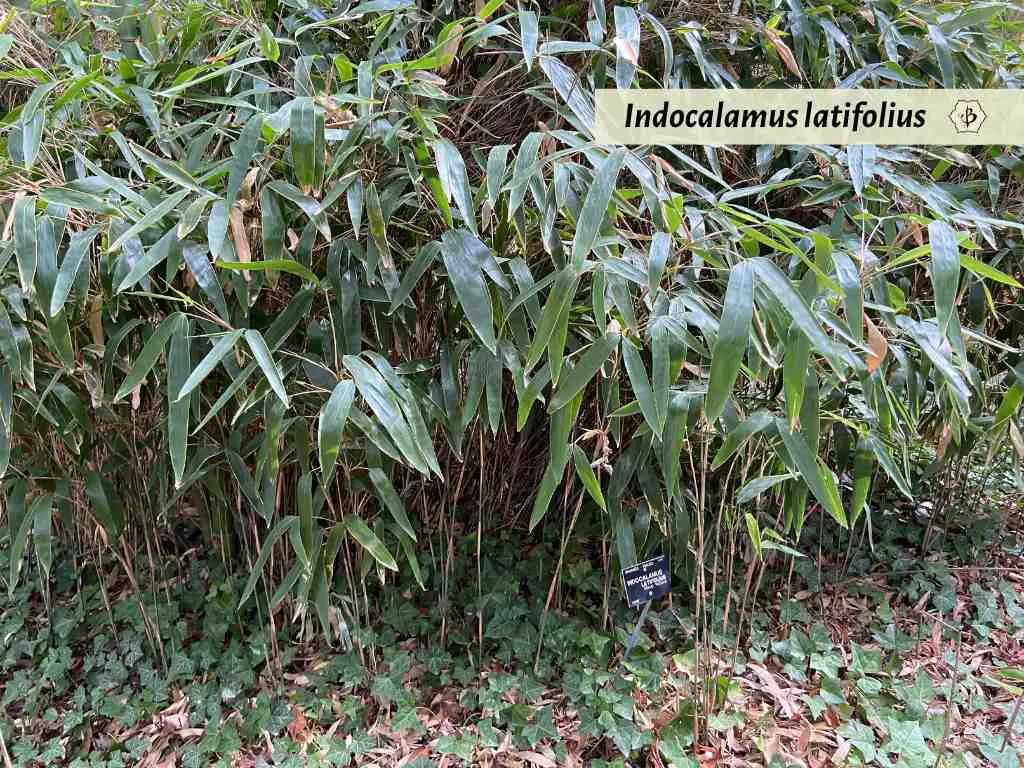
Oxytenanthera abyssinca
This exotic grass, often called African Lowland Bamboo or Savannah Bamboo, grows widely throughout sub-Saharan Africa. Especially common in Ethiopia, this medium-sized species has great potential as a wood alternative for making charcoal and other products. The hard and solid (or nearly solid) poles make it very valuable for making furniture and building materials.
Lowland Bamboo also has a lot of moisture in its culms. The honey-like fluid can be gathered during the rainy season and fermented into an intoxicating beverage. This tangy bamboo beer, Ulanzi, is fairly popular in Tanzania.
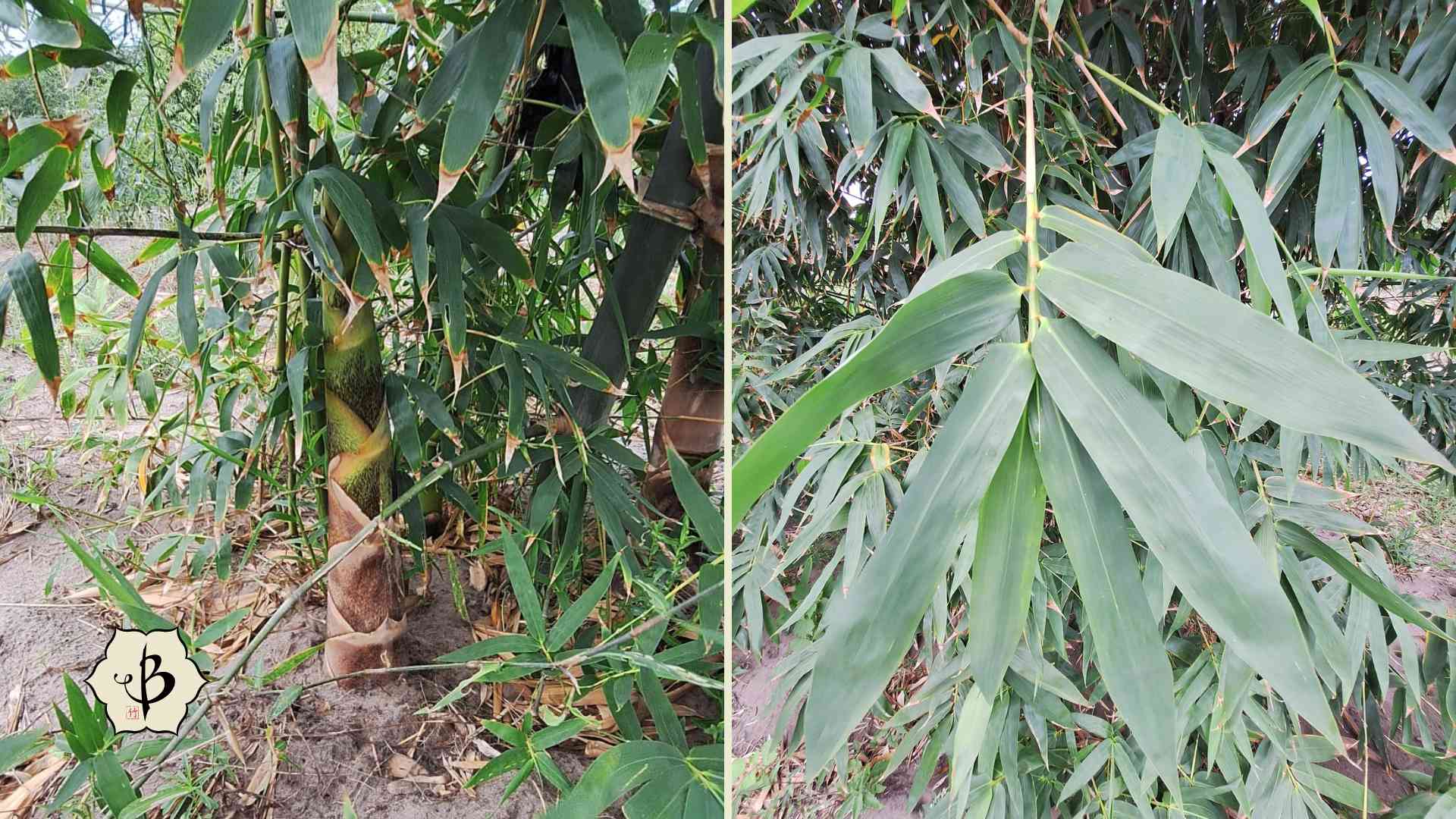
Phyllostachys heteroclada
This species is popularly referred to as solid-stem bamboo and sometimes as water bamboo. As the name suggests, the culms grow solid or nearly solid, unlike most varieties of bamboo which are characteristically hollow.
Although the stems are almost solid, the roots and culms do have small air canals which help them survive in very wet soil. As its other common name indicates, this variety does relatively well in wet soil. But no varieties of bamboo can really tolerate saturated soil or grow directly in the water. This is also a very cold-tolerant species, hardy down to -5 or 10º F.
A running bamboo with a vigorous growth habit, P. heteroclada makes an ideal candidate for privacy screens, especially in very cold or wet areas. The canes grow up to 15 or 20 feet tall, normally not more than 1 inch in diameter. Some nurseries list it as Phyllostachys purpurata.
If you’re looking for a solid bamboo species that you can grow in your own garden, in North America, this will probably be your best choice. The Dendrocalamus varieties may be an option if you live someplace hot and humid, like Florida or Louisiana.
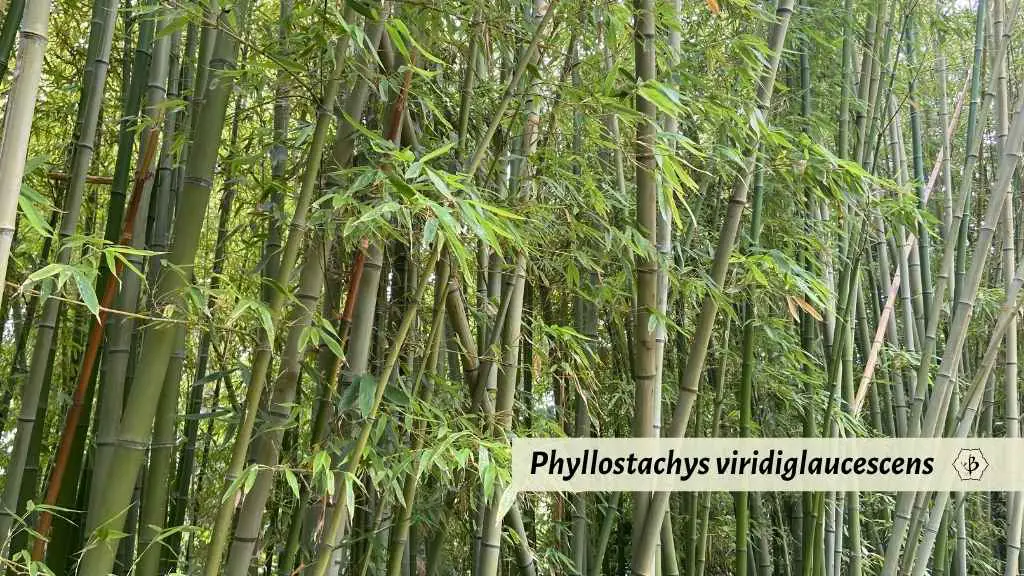
Phyllostachys viridiglaucescens
Another temperate running bamboo, “Green Glaucous Bamboo” has a very good quality of wood for crafts and structures. It can grow 10 to 25 feet tall, depending on the climate, with 2 to 3-inch thick poles, upright, very straight, and very attractive. The leaves are vibrant green and the culms are almost solid.
Pseudoxytenanthera ritcheyi
This is an especially rare variety of bamboo, growing only in the south of India, in the plains and foothills. Pseudoxytenanthera ritcheyi is one of only four recognized species from this exotic genus. Locals sometimes refer to it as “erankol”, among other names, and they often harvest it from the wild to use for construction. Like other species on this list, its solid culms provide an excellent building material.
Bamboo lookalike
There’s another tropical plant that looks like bamboo and has a solid stem, but it’s not. We know it from vintage furniture stores where it is sold as rattan.
What is rattan?
Rattan is a woody vine that grows naturally in South East Asia. Like bamboo, there are several hundred varieties of rattan. (There may in fact be closer to 2000 varieties of bamboo, depending on how you count and whom you ask.) Unlike bamboo, rattan is not a grass. It is more closely related to various palm trees in the subfamily Calamoideae.
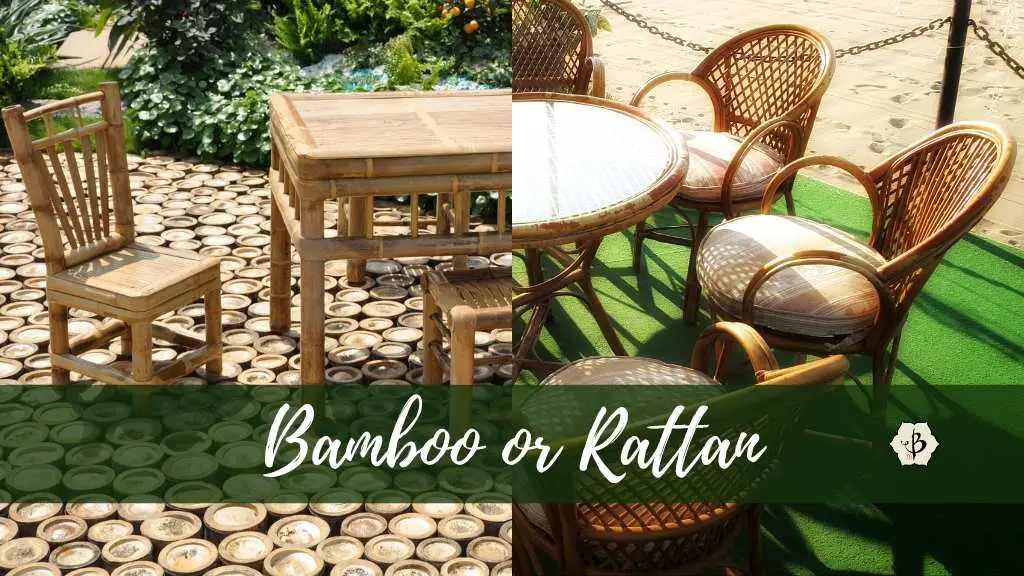
Also, rattan is solid on the inside. It is not hollow like bamboo, most bamboo that is. And rattan vines can sometimes grow hundreds of feet long. They also have hooks, which allow them to cling and crawl up trees and other vegetation. Rattan is not considered a true wood, but instead, it is classified as a liana.
In some ways, on the surface, rattan looks very similar to bamboo, especially once it’s been made into furniture. It’s very easy to confuse a bamboo table with a rattan table. But rattan furniture has a lot more curves and bends, while bamboo furniture usually consists of straight poles fastened together. In this way, rattan furniture can be more interesting and attractive. The solid nature of rattan also makes it more durable than hollow bamboo.
Most rattan for commercial use and furniture making comes from Indonesia. Bangladesh, Malaysia and the Philippines are also major rattan producers. Rattan currently faces the risk of over-exploitation because it is used so widely. On the other hand, the availability of rattan gives loggers an alternative to cutting down trees, so its use has helped to protect old-growth forests.
Further reading
If you found this article useful and interesting, please consider sharing the link or subscribing to the blog. You might also enjoy some of the following posts.

























